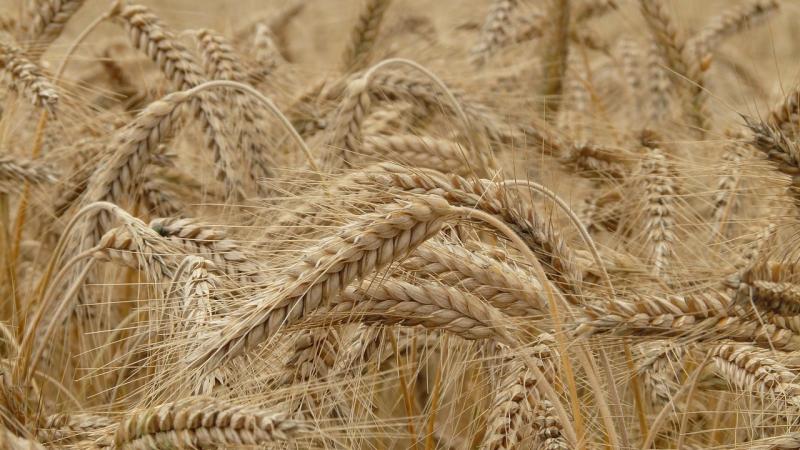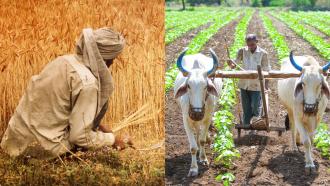
Around 11,000 years ago, farmers in the Fertile Crescent in the Middle East, had to tackle a unique challenge in growing wheat. Once ripened, the grains of the wild emmer wheat would scatter on the ground before harvest. Over the next few thousands of years, farmers carefully chose and bred plants that have today resulted in wheat as we know it. The grains are now bigger, yields better, and more importantly, the plant holds the ripened grains until harvest. Years of selective breeding of crops like wheat, rice and maize have resulted in varieties of these plants that have better yield, quality and resistance to diseases.
Plant breeders typically identify new varieties of plants by solely looking at their external appearance. Often, the differences between them are subtle, indistinct and take time to tell them apart. Misidentification can result in economic and legal hassles. Besides, various international and national authorities govern the intellectual property rights of new breeds and have strict guidelines on how they are used for commercial agriculture.
In a recent study, researchers from ICAR-Indian Institute of Wheat & Barley Research, Karnal, and ICAR-Indian Agricultural Statistics Research Institute, New Delhi, have proposed a faster and reliable approach to identify different varieties of wheat. Using a mix of software engineering, mobile application development and genetic analysis, they have developed a new web-based server called VISTa—the first-ever plant variety identification system in the world—to identify wheat varieties. The study was published in the journal Scientific Reports.
“Recognising new breeds is important in developing or improving the existing breeds, tracing the crop to its breeder or its geographical location, and settling legal disputes”, say the researchers of this study. The recent dispute between a group of potato farmers in Gujarat and PepsiCoⓇ, manufacturer of the popular brand of potato chips LaysⓇ, is one such example. “Varietal differentiation has also been reported to increase the price tag value of wheat over two folds in domestic and international markets”, they add.
In India, the Protection of Plant Varieties and Farmers’ Rights Authority (PPV&FRA) recognises new varieties of a crop by growing its seeds and looking for unique traits. A new variety has some distinct morphological or physiological characteristics, such as the height of the plant or the colour of the leaf, that sets it apart from other reported varieties. The authority also checks that the features of the new variety are uniform across generations and that they remain unchanged or stable after its repeated propagation. These features, collectively called as the distinct, uniform and stability (DUS) features, are then used to establish the new variety.
In this study, the researchers selected 368 genetically different varieties of Indian wheat. For each of them, they recorded 36 DUS features per the guidelines outlined by PPV&FRA. The researchers also extracted and analysed the DNA—the genetic material—of these varieties. Since not all variations in the DNA are useful in variety identification, they selected only those that showed statistically significant variations. After discarding genetic changes that influence each other or those that are redundant, they zeroed in on 54 variations.
Out of these 54 variations, ten were from a part of the DNA which does not play a role in the coding of protein sequences. Protein sequences play an important role in many cellular functions. The remaining 44 variations were used in hypothesising the relationship between the genetic changes and crucial biological functions and traits, such as flowering, acclimatisation to cold, photosynthesis and disease resistance.
The researchers then used the 36 DUS features and 54 DNA variations to generate a unique identifier in the form of quick response code, commonly known as QR code, for each type of crop. “Although the current study is limited to Indian wheat, it can be easily extended to include other crop types as well”, say the researchers.
The results of the analysis are stored on a web server named VISTa (Variety Identification System of Triticum aestivum), which acts as a readily accessible database of crop varieties linked to their genetic markers. This information can be obtained from a server instantaneously and accurately. The server can also be easily modified to identify varieties of other crops too. The researchers hope that their innovation can help to manage genetic resources of plants and improve crop productivity.
The identification of unique varieties is not just a scientific challenge but also involves legal and economic complexities. Designing a variety identification system that does it on time is a significant step in addressing this multilayered challenge.
This article has been run past the researchers, whose work is covered, to ensure accuracy.

























